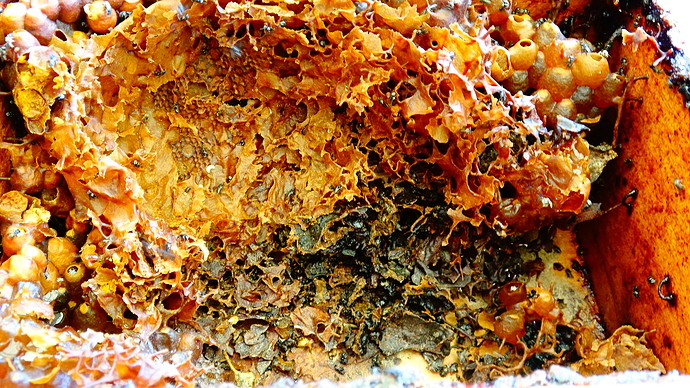A few hours later, here’s the bees working their entrance.
After removing the lid to reveal the nest through the viewing window.
Upon removing the viewing window, some brood was adhered to the window.
A closeup of the brood pattern.
This photo shows the advancing front, slightly behind the emerging rear. Note the difference between new brood & old brood.
This photo shows stored pollen as well as stored honey in sugar bags. Note the clear space between the brood mass & stored honey/pollen.
This one shows the nest after removal of brood mass.
I’m showing the 2 used boxes I’m using for each split. I’ve reduced the entrance sizes to 6mil by using their own wax. I’ve evenly split the brood for each box. Also I’ve only put small amounts of honey/pollen into each split, as well as some of their dry wax.
A little sweet reward for us to enjoy.
The bees will move into the new boxes over the next few days. With the use of viewing windows, I’ll be able to monitor each population. If I need to, I can swap positions to equalize population numbers.
Finally the view of a new advancing front in a split we did about 5 weeks ago. Last week a customer picked up the other 1/2 that was split into his empty box. This was once we confirmed a new advancing front, also the sighting of his queen.
cheers!
PS, it’s important to reduce the entrance, as well as tape up any cracks in order to keep predators out. Natural predators being Phorid Flies & Syrphid Flies. Unnatural predators being hive beetles.
Only placing small amounts of honey/pollen is also part of the strategy.


 I guess they look a bit like a wasp who would try and get in and steal their honey.
I guess they look a bit like a wasp who would try and get in and steal their honey.











